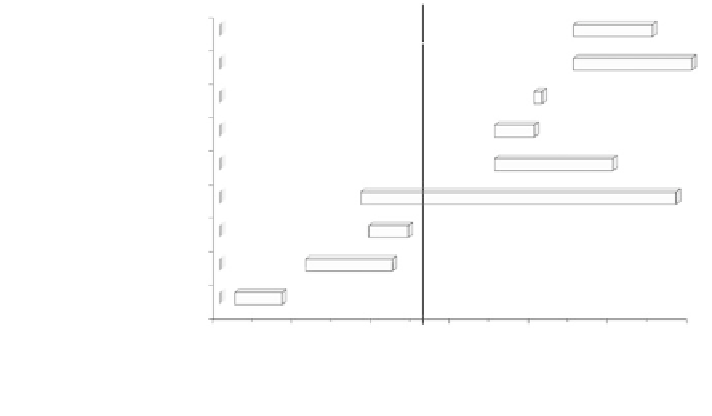Civil Engineering Reference
In-Depth Information
still air
cork
foam glas
cotton wool
polystyrene foam
mineral wool
polyurethane foam
microporous insulation
aerogels
vacuum insulation panels (VIP)
0
0.01
0.02
0.03
0.04
0.05
0.06
thermal conductivity / Wm
-1
K
-1
Fig. 1
Typical thermal conductivity values of thermal insulation materials at ambient conditions
called superinsulations. An overview of thermal insulation materials is depicted in
Fig.
1
.
Against the backdrop of the climate change and the necessary actions to limit its
impacts on the environment, the reduction in greenhouse gas emissions by
implementing energy-saving technologies is a key issue of international efforts. In
this context, the improvement in the thermal insulation of our building stock is one
of the most effective ways to reduce the energy consumption. In Europe and the
United States, about 40 % of the total energy consumption is from buildings,
especially to old ones. In Germany, for example, about 2/3 of the building stock
that was constructed before 1977 consumes about 95 % of the energy in the
building sector. Concerning the development of thermal insulation products for
building industry, a lot of existing customary insulation products were optimised
in the past. One example is the opacification of expanded polystyrene foams with
pigments, i.e. opacifier, which reduces heat transfer within these low-density
foams by absorbing thermal radiation and therefore leading to a lower total
thermal conductivity of the thermal insulation product. However, the use of
classical insulation materials (e.g. mineral wool, foam products) has the effect that
the thicknesses of insulation layers for façades have to be quite large to fulfil the
requirements of the building codes and current regulations. Thus, insulation
thicknesses of more than 10 cm are not unusual. For extremely well-insulated
façades with U-values of about 0.015 Wm
-1
K
-2
, insulation thicknesses of more
than 20 cm are needed. In respect to refurbishment of buildings, these additional
thick insulation layers could lead to problems in implementation (cf. Fig.
2
). Of
course the remaining space at the insulated area will be reduced. In the case of
internal thermal insulation, e.g. considering the insulation of an attic, the usable
space will be reduced and might affect the quality of living. Also in some cases,

